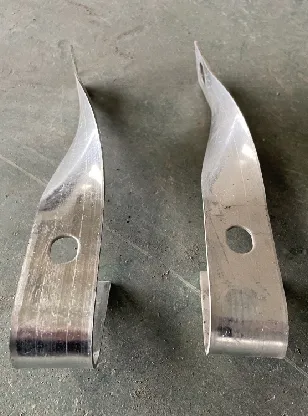loading...
- No. 9, Xingyuan South Street, Dongwaihuan Road, Zaoqiang County, Hengshui, Hebei, China
- admin@zjcomposites.com
- +86 15097380338
- Welcome to visit our website!
gfrp rod
The Versatility of GFRP Rods A Modern Solution for Construction and Infrastructure
Glass Fiber Reinforced Polymer (GFRP) rods are emerging as a revolutionary material in the field of construction and infrastructure. These rods, made from a combination of glass fibers and polymer resins, offer a myriad of benefits that traditional materials like steel and concrete cannot match. This article delves into the advantages, applications, and future potential of GFRP rods.
The Composition and Manufacturing of GFRP Rods
GFRP rods are produced by integrating glass fibers into a polymer matrix, typically epoxy, vinyl ester, or polyester. This composite construction endows the rods with remarkable strength, but also lightweight properties, making them easier to transport and handle on construction sites. The manufacturing process often involves pultrusion—a method where materials are drawn through a die to create a continuous shape which provides consistent quality and performance.
Advantages of GFRP Rods
One of the standout features of GFRP rods is their resistance to corrosion. Unlike steel, which can rust and degrade when exposed to moisture, chemicals, and harsh weather, GFRP rods maintain their integrity over time. This characteristic makes them particularly appealing for infrastructure projects in coastal areas or environments with high salt content, where traditional materials would succumb to deterioration.
Additionally, GFRP rods exhibit excellent tensile strength, often surpassing that of steel, while being significantly lighter. This lighter weight not only reduces transportation and handling costs but also puts less stress on supporting structures. Their non-conductive properties also make GFRP rods suitable for electrical applications, as they won’t interfere with electrical signals or pose risks of electric shock.
Applications in Construction and Infrastructure
The versatility of GFRP rods allows for their application across a wide range of construction projects. They are often used in the reinforcement of concrete structures, providing support and stability without the associated weight and corrosion issues of traditional steel reinforcement bars. In bridge construction, GFRP rods can enhance the lifespan and maintenance needs of the structure, making them a wise investment in long-term infrastructure development.
gfrp rod

Beyond structural reinforcement, GFRP rods are also utilized in slope stabilization, geotechnical applications, and the construction of retaining walls. Their lightweight nature and resistance to environmental stressors make them ideal for these applications, which often require materials that can withstand harsh conditions without adding excessive loads.
Environmental Impact and Sustainability
The use of GFRP rods contributes to more sustainable construction practices. Their longevity reduces the need for repairs and replacements, which can be resource-intensive and generate waste. Furthermore, their lightweight composition can lead to lower energy consumption during transportation, contributing to a reduced carbon footprint. As the construction industry shifts its focus towards sustainability, GFRP rods represent a forward-thinking material choice that aligns with these goals.
Challenges and Future Prospects
Despite their many advantages, GFRP rods are not without challenges. The cost of production can be higher than traditional materials, which may deter some contractors, especially in regions where budget constraints are significant. However, as technology advances and production techniques become more efficient, it is anticipated that the costs associated with GFRP materials will decline.
Moreover, ongoing research into enhancing the properties of GFRP rods, such as improving their fire resistance and impact performance, continues to expand their applicability in various fields. The construction sector is increasingly recognizing the benefits of composite materials, and GFRP rods stand out as a prime candidate for future projects.
Conclusion
In conclusion, the advent of GFRP rods represents a significant leap forward in construction materials technology. Their impressive strength-to-weight ratio, resistance to corrosion, and versatility in application make them a crucial component in modern infrastructure development. As the construction industry continues to innovate and seek sustainable solutions, GFRP rods are poised to play a pivotal role in building a safer, longer-lasting, and environmentally friendly future.
-
The Rise of FRP Profiles: Strong, Lightweight, and Built to LastNewsJul.14,2025
-
SMC Panel Tanks: A Modern Water Storage Solution for All EnvironmentsNewsJul.14,2025
-
GRP Grating: A Modern Solution for Safe and Durable Access SystemsNewsJul.14,2025
-
Galvanized Steel Water Tanks: Durable, Reliable, and Ready for UseNewsJul.14,2025
-
FRP Mini Mesh Grating: The Safer, Smarter Flooring SolutionNewsJul.14,2025
-
Exploring FRP Vessels: Durable Solutions for Modern Fluid HandlingNewsJul.14,2025
-
GRP Structures: The Future of Lightweight, High-Performance EngineeringNewsJun.20,2025
